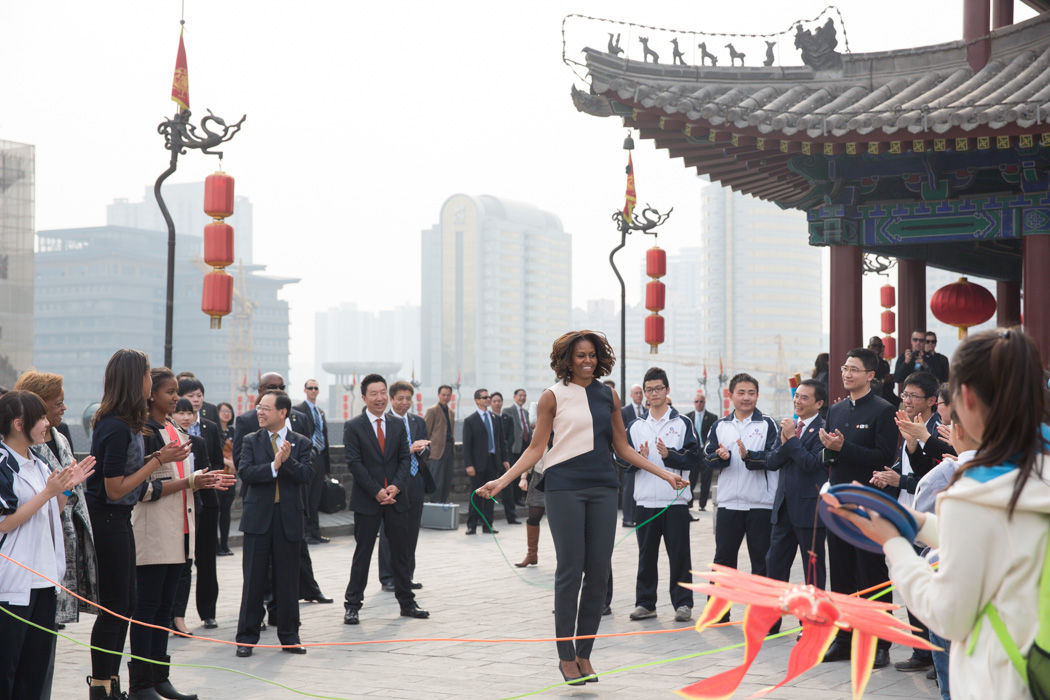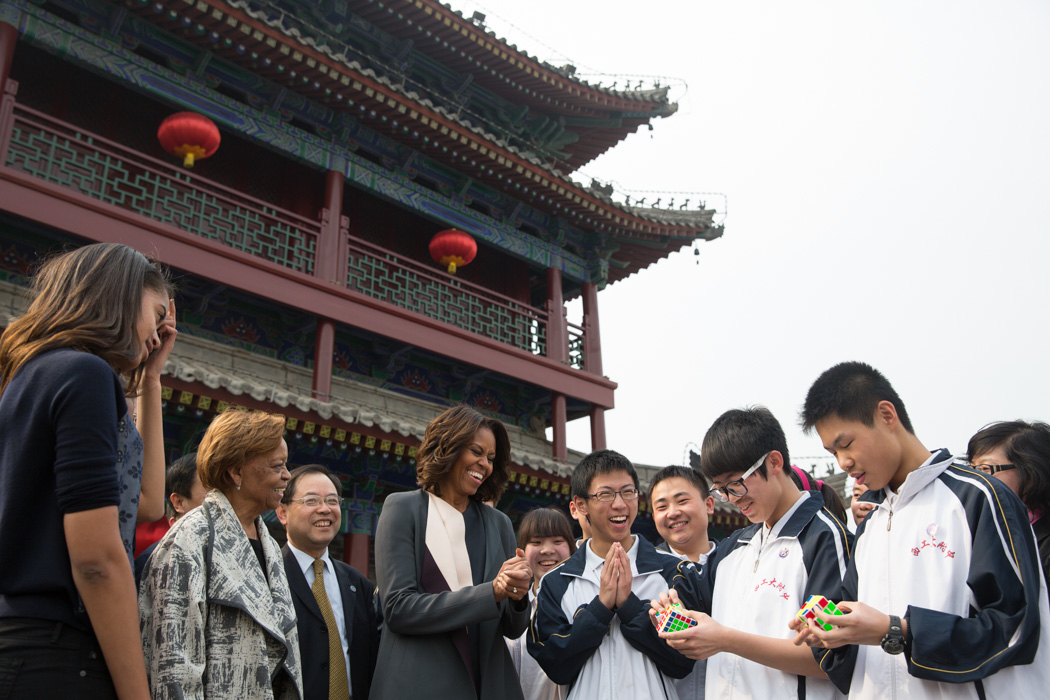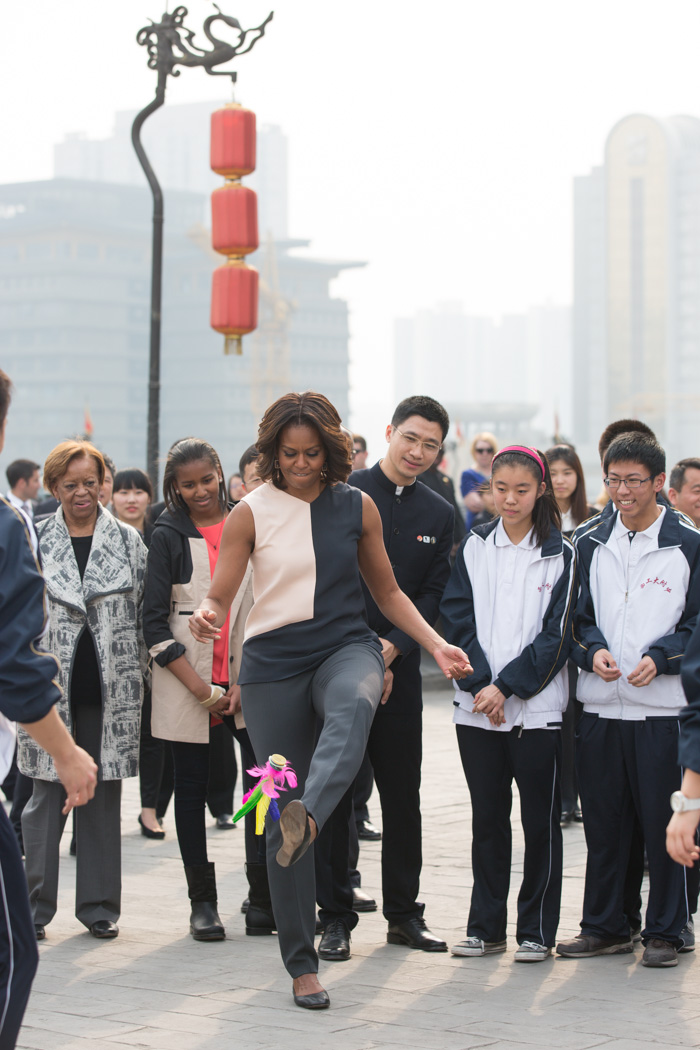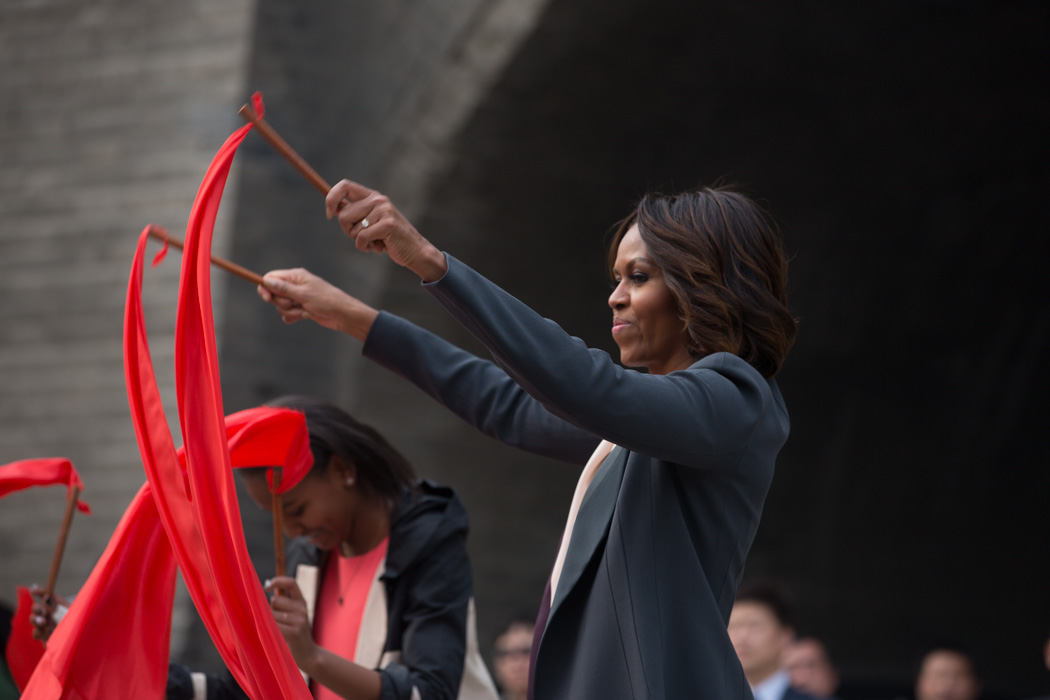
Note: This post is part of a series authored by First Lady Michelle Obama to share her visit to China with young people in the U.S. You can read all of the First Lady's posts at WhiteHouse.gov/First-Lady-China-Trip.
After seeing the Terra Cotta Warriors outside of Xi’an, we returned to the city to view the Xi’an City Wall.
The Xi’an City Wall is the oldest and largest surviving wall of its kind in China. It’s a 40-foot tall rectangle that stretches for 8.5 miles. At its base, the Wall is 50 or 60 feet wide. At the top, it’s about 40 feet wide – wide enough for Xi’an residents and tourists to run, walk, or ride a bike around (it takes about four hours to walk the entire distance at a leisurely pace). From the wall you can see the ancient Bell Tower, a beautiful building which marks the center of the ancient city.
Xi’an was once China’s capital city, and even after the capital was relocated, the city remained an important military stronghold for centuries. Just like the Great Wall, the Xi’an City Wall was originally built for defense, with watchtowers and even a deep moat and drawbridges. Parts of the wall date back to the seventh century, and the wall we know today was completed in the 14th century. Since then, it has been refurbished three times – roughly once every two hundred years – in the late 1500s, the late 1700s and, most recently, in 1983.
Our visit began with a breathtaking display of drumming and music by performers dressed in colorful traditional costumes, and we were presented with a passport to the Wall (which is sort of like getting the key to a city -- it's a ceremonial honor that conveys respect and appreciation). Then, as we walked along the Wall, we were treated to the following wonderful experiences:
- Kids from a local kite flying club showed us how to fly kites they had made themselves.
- Another group of students from a local school did a double dutch jump rope demonstration (and I couldn't resist -- I kicked off my heels and joined them...but I only did single rope jumping).
- A young man demonstrated his ability to solve a Rubiks cube in about 15 seconds flat (I still have no idea how he did it!).
- Two other young men showed off their skills doing something that looked like hackey sack where they were kicking around little bean bags with feathers attached (I gave it my best shot, but I couldn't hold a candle to these guys).
- A paper cutting artist showed off her amazing skills -- she even made paper cutouts of me and my family!
- We saw another performance by drummers and folk dancers -- and they did a lovely dance number for us (and my daughters and I joined in for some dancing at the end).
As I watched these performances and demonstrations, I was struck by how this wall, which was constructed as a physical blockade, now serves as a symbolic connection between China’s past and present. There you stand, on top of a wall that’s hundreds of years old – a wall that has withstood war and famine and the rise and fall of dynasties. Yet when you look down, you realize that below you on both sides lies a city not too different from one you’d see in America – a city full of cars and bustling commercial districts, but also quiet residential areas.
It reminded me a little bit of when I met with a class of sixth graders back in the United States – 11 and 12 year olds who visited China last year. They told me that before they left, they assumed they’d encounter historic palaces and temples everywhere they went, but instead, they found massive cities full of skyscrapers and bright lights.
Here at Xi’an, you can’t miss how both sides of China – the ancient and the modern – are intertwined in a city that’s as much a part of China’s past as it is its future.






